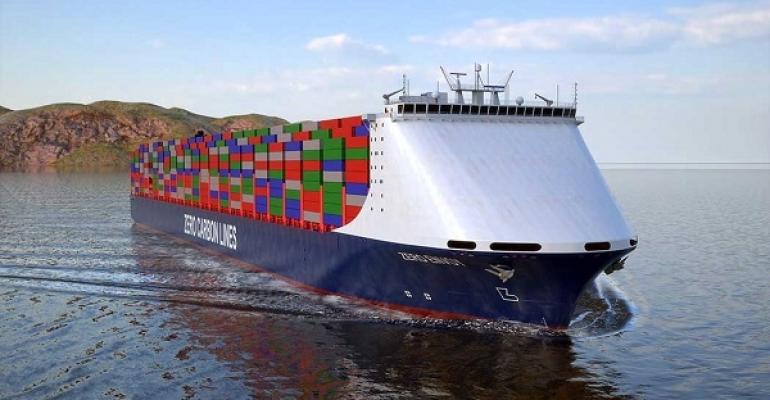Speaking at media briefing for the launch of ABS’ “Low Carbon Shipping Outlook” at Nor-Shipping 2019, Anders Backlund, senior principal, business development manager of Herbert Engineering, “I absolutely think we cannot look for one solution that covers all.”
Herbert Engineering worked with ABS on two concept designs for future containerships that are featured in the report.
“If you look at shortsea shipping as logistics service it competes with land-based shipping, the logistics side of that with batteries you could charge them as they are more often in port,” Backlund said.
“Deepsea shipping is a different ball game, I do believe there will different types of solutions for different ship types and different trades. I don’t think we will see one solution that covers all.”
Read more: Charting a course to decarbonise shipping
The report covers a wide variety possible future fuels for shipping including LNG, LPG, methanol, ammonia, hydrogen, biofuels, batteries, fuel cells, solar, wind, and carbon capture and synthetic fuels.
Gurinder Singh, ABS director of sustainability, commented: “The reduction targets for 2030 are challenging but, as they are a measure of carbon intensity, they allow for trade growth. However, any measures taken to meet those goals must also consider 2050 targets if they are to account for the growth in trade and transportation demand while reducing GHG emissions. This will require new technologies.”
The future designs worked on with Herbert Engineering featured in the report are for 2,000 teu and 14,000 teu ships powered by bio-fuels and hydrogen fuel cells, however, the choice of these two fuels for the study does not mean they will necessarily be the fuels of the future.
Copyright © 2024. All rights reserved. Seatrade, a trading name of Informa Markets (UK) Limited. Add Seatrade Maritime News to your Google News feed.


